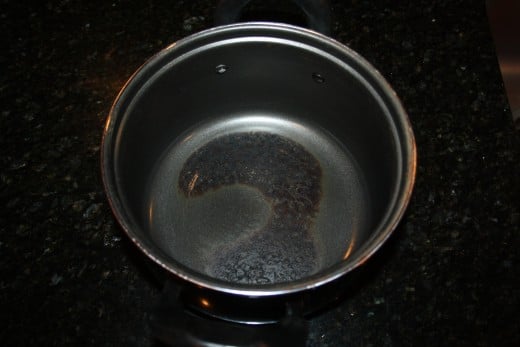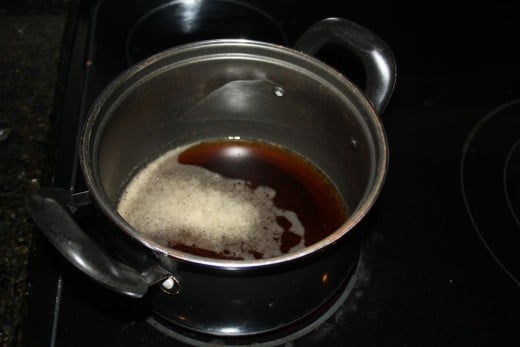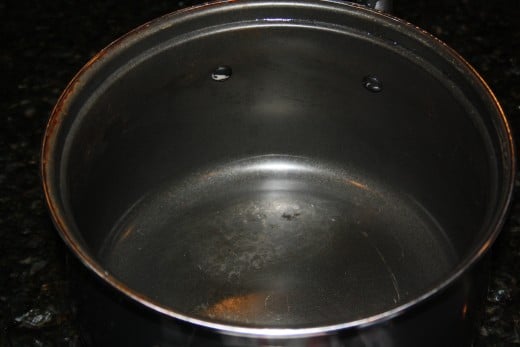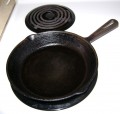Kitchen Secrets - How to keep your pots and pans clean
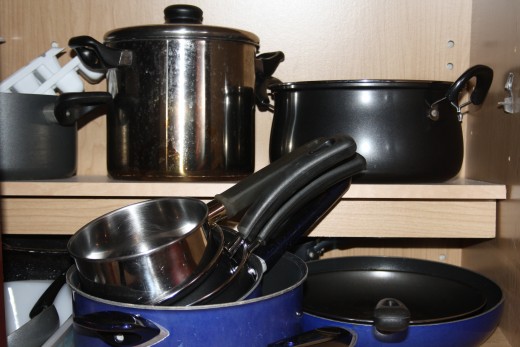
Pots and Pans
Every time you cook at home you more then likely will use a pot or pan. If you are like me, when you are cooking dinner you are also chasing after three kids and helping a husband with something he needs done. I've forgotten to stir the noodles and they have stuck to the bottom of a pot, I've left the spaghetti sauce uncovered and it bubbled all over the place, I've even burnt stuff to the bottom of a pot so bad it wouldn't come out. You would think after 9 years of marriage I would learn how to keep it all under control.
If you are like me, and are always busy or just forget, here are some Kitchen Secrets for your pots and pans that cover removing stuck on food, burnt on food, and also care for all types of pots.
Removing stuck on and almost burnt on food
For most types of cookware, you can just fill the pot or pan with water and 1 or 2 tablespoons of liquid dish detergent. Put the pot back on the stove and bring the water to a biol. Then shut off the heat, let it soak until the water cools completely and rinse out the water. Don't be surprised if the food comes out with it. Whatever is left should sponge off easily.
To clean burnt on food from a cast-iron pan fill the pan with water and 1 or 2 teaspoons of liquid dish detergent. Let it simmer until you see pieces of food starting to lift off the bottom. Then wait until it is cool enough to touch and scour off whatever didn't come completely loose. After all the food is off the bottom of the pan you may want to re-season your pan.
To loosen food stuck on an enamel pot just mix 2 tablespoons of baking soda with 2 cups of water, bring it to a boil and let it boil for about 10 minutes. Once the water cools down you should be able to scrape the food off the pot and then wash the pot.



Cleaning burnt pots and pans
If the burn is moderate, meaning it is not easy to clean but not burned to a crisp, you put about 2" of water in the pot and bring it to a boil. Once it starts boiling, cover the pot and let it boil for another 5 minutes. As soon as it is cool enough to touch, scour off the burn. If it doesn't come right off, add a few tablespoons of baking soda and/or distilled white vinegar. Give it a few minutes to sink in and scour again.
For moderate burns you can also boil 1 cup of cola in the pot, wait for it to cool and then you should be able to scrub off the burn.
If the burn is severe you will fill the pan halfway with water. For a small pan (up to 7" in diameter) add 1/4 cup of baking soda. For larger pans add 1/2 cup of baking soda. Bring it to a boil and then watch as it continues boiling. The burned pieces should float to the top. If it doesn't happen within a reasonable amount of time, chances are it is never going to come out.
Taking care of your cookware
Caring for Aluminum Pots
- To remove stains, fill the pot with enough water to cover all the stains. Then gently boil the peel of an apple or some rhubarb stalks or slices of grapefruit, lemon or orange, or even slices of tomatoes. After about 5 minutes, take the pot off the fire, spill out the water, dispose of the food, wash the pot with a little liquid dish detergent, rinse and dry.
- To clean up a blackened pot you put 1 teaspoon of cream of tartar and 2 cups of water in the pot. Boil the mixture for about 3 or 4 minutes. Then wash and dry as usual. That should get rid of the blackened area.
Caring for Stainless Steel Pots
- While rainbows are beautiful, you don't necessarily want them on your pots. Rainbows on stainless steel pots will disappear if you rub them with a drop of olive oil.
Caring for Cast-Iron Cookware
- Even though cast-iron cookware is an excellent source of dietary iron, you don't want food that tastes like cast iron. It won't if you season the pot or pan before cooking with it for the first time. Seasoning it will also help prevent food from sticking to the pan. To season your cast-iron rub on a thin layer of vegetable or mineral oil with a soft cloth or piece of paper towel. Then put the pan in a 250 degree F oven for 2 hours, until it's smoky and blackened.
- To remove rust from your cast-iron cookware, mix sand (available at hardware stores, nurseries, pet shops and the beach) with enough vegetable oil to form a thick, gritty paste. Smear the paste on the rusty portions of the cast-iron pan, then scour it with steel wool. When the rust is gone, you wash the pan thoroughly and then re-season.
- To keep your cast-iron rust free, when any piece of cookware is not being used, let it sit on a coffee filter and this helps absorb any moisture that can cause the rust.
- Never put cast-iron in the dishwasher!
Caring for Clay Cookware
- Soak the cooker with warm water and 1 to 4 tablespoons of baking soda, depending on the size of the smelly, stained clay piece. Let it stand for a few hours, then rinse thoroughly and dry.
- Clay cookware can crack so do not wash it in the dishwasher. Do not scrub it with steel wool. When a piece of clay cookware is very hot, do not put it on the cold counter.
- To prevent food from staining the surface of a clay cooker, line it with parchment paper before cooking.

